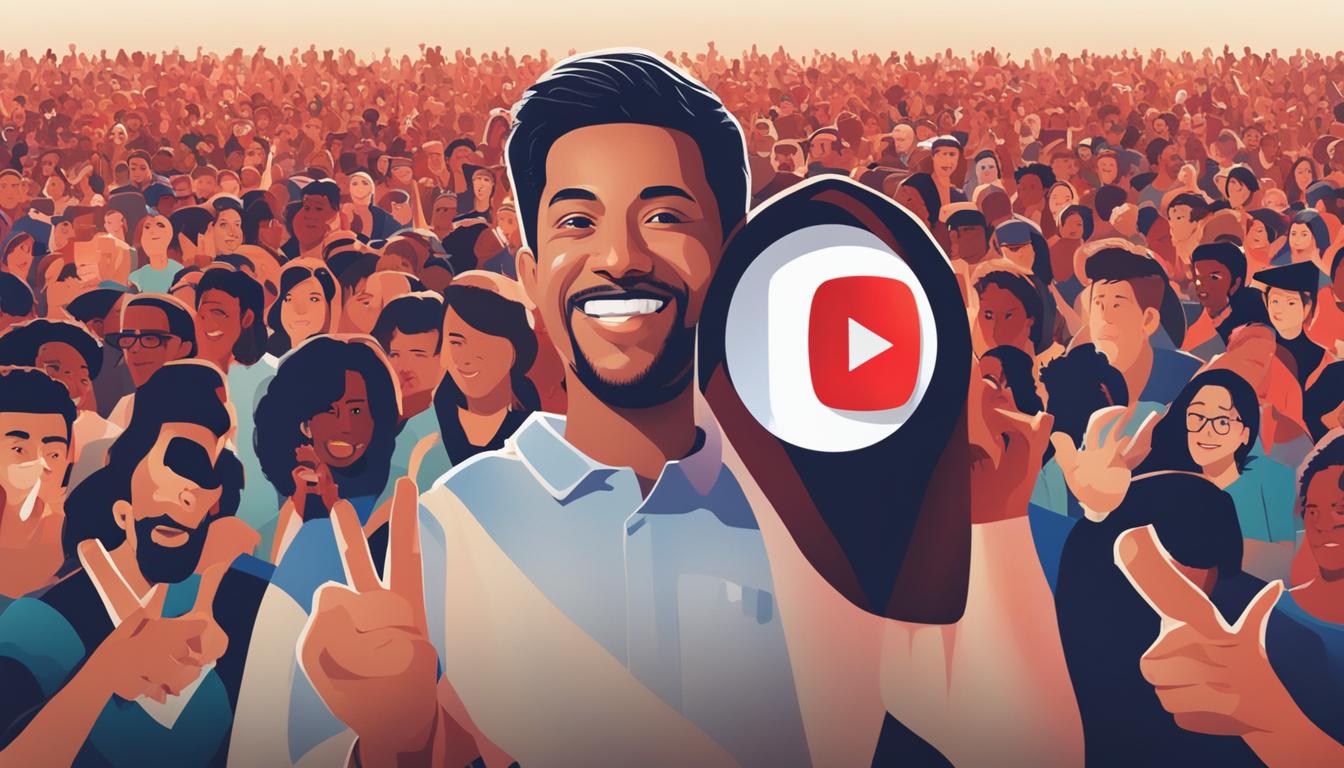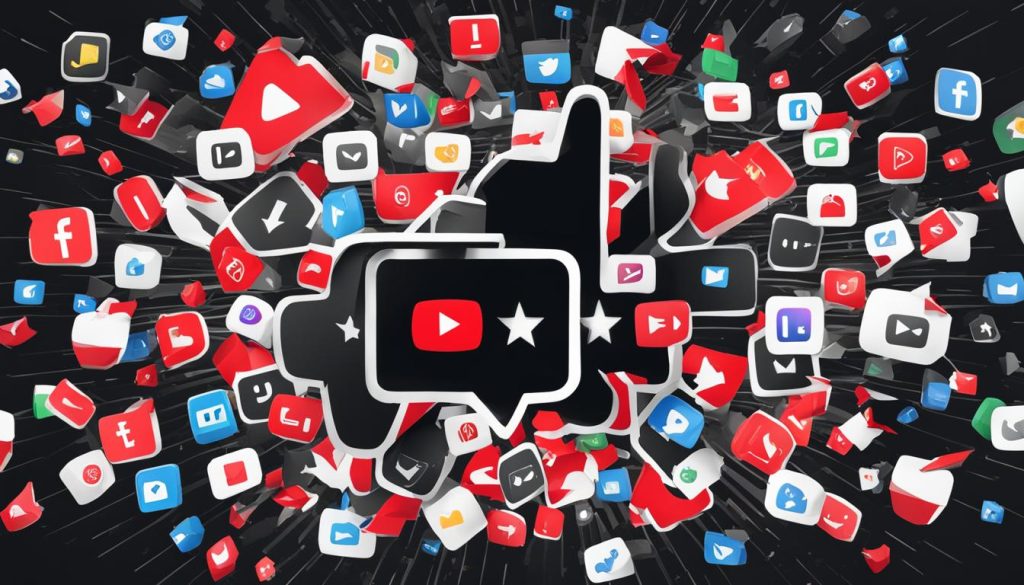
YouTube made a significant change in November 2021 by removing the dislike count from all videos. This decision came after an experiment conducted in March of the same year, which revealed the negative impact of dislikes on creators. YouTube’s CEO, Susan Wojcicki, stated that the primary reason behind this change was to protect creators from unfair targeting and harassment. The platform noticed that smaller creators and those starting out were often victims of “dislike attacks.”
Despite some controversy and criticism surrounding this decision, YouTube has no plans to bring back the dislike count. The platform remains committed to creating a safer and more supportive environment for creators and users alike.
Key Takeaways:
- YouTube removed the dislike count from all videos in November 2021.
- This decision aims to protect creators from unfair targeting and harassment.
- Smaller creators and those starting out were often victims of “dislike attacks.”
- YouTube has no plans to bring back the dislike count.
- The platform remains committed to creating a safer and more supportive environment for creators and users.
Reasons Behind YouTube Removing Dislikes
YouTube’s decision to remove dislikes from videos was driven by several key reasons. Firstly, the dislike button was frequently misused as a tool for harassment and bullying towards creators. By removing dislikes, YouTube aims to protect creators from unfair targeting and alleviate the negative impact on their motivation and mental well-being. This change is part of the platform’s ongoing efforts to create a safer and more supportive community.
Moreover, dislikes on a video could potentially affect its visibility in the algorithm, leading to reduced opportunities for success. YouTube’s algorithm takes into account various factors to determine video recommendations, and the presence of dislikes could skew these suggestions. By removing dislikes, YouTube aims to address potential biases and provide a more accurate and relevant content discovery experience for users.
Additionally, YouTube’s decision to remove dislikes is intended to address the growing polarization and division on the platform. The company recognizes that the dislike button has been used as a tool to express disagreement and fuel online debates. By removing dislikes, YouTube hopes to promote more positive and respectful interactions among users, fostering a sense of community and reducing toxic behavior.
Overall, the reasons behind YouTube removing dislikes revolve around protecting creators, improving the accuracy of its algorithm, and promoting a more positive and inclusive community. While this decision has sparked controversy and mixed responses from users, YouTube remains committed to evaluating and adapting its policies based on user feedback. The platform continues to prioritize the well-being of creators and users alike.
Impact of YouTube Removing Dislikes
The removal of dislikes on YouTube has had a significant impact on the platform and its community. While many creators have welcomed the change as a way to combat harassment, others have expressed concerns about the loss of a valuable feedback mechanism. The community response has been mixed, with some appreciating the efforts to create a safer space, and others feeling that removing dislikes hinders their ability to assess video quality. YouTube maintains that removing the dislike count has not had a meaningful impact on viewership, but it remains a contentious decision among users.
Since the removal of dislikes, YouTube has seen a shift in the dynamics of engagement between creators and viewers. With the dislike count no longer visible, some creators have reported a decrease in negative comments and a more positive overall environment. They believe that removing dislikes has reduced the potential for targeted harassment and bullying, making it easier for them to focus on creating content without fear of unfair judgment.
However, there are those who argue that the removal of dislikes limits transparency and accountability. Without the ability to see the overall sentiment towards a video, viewers may find it difficult to gauge its credibility and quality. Dislikes have traditionally served as a way for users to express their dissatisfaction or disagreement with the content, and some believe that removing this feature hampers their ability to provide constructive feedback.
“The removal of dislikes on YouTube has sparked debates among users, with some applauding the platform for taking steps to protect creators, while others express concerns about transparency and accountability.”
YouTube’s decision to remove the dislike count has not come without controversy. While the platform aims to foster a more positive community, some argue that the absence of dislikes may hinder the ability to hold creators accountable for their content. The debate surrounding the impact of this change and the value of dislikes continues to divide YouTube users.
| Pros | Cons |
|---|---|
| Reduces targeted harassment and bullying towards creators | Limits transparency and accountability |
| Fosters a more positive environment | Viewers find it difficult to gauge the credibility and quality of videos |
| Creators can focus on content creation without fear of unfair judgment | Some users believe it hampers their ability to provide constructive feedback |
YouTube’s Algorithm and Dislikes
Since YouTube removed the public display of dislikes, there have been discussions about the impact on the platform’s algorithm and user feedback. Dislikes used to play a role in determining video recommendations, but their absence now raises questions about the accuracy and relevance of the algorithm’s suggestions.
User feedback on this aspect has been mixed. Some express concerns about potential biases in the algorithm and worry that videos may no longer be accurately recommended. On the other hand, there are those who appreciate the shift towards a more positive content recommendation system, hoping it will promote a healthier and more inclusive community.
While YouTube has stated that the removal of dislikes has not had a significant impact on viewership, the topic remains contentious. The absence of the dislike count has prompted conversations about the credibility and quality assessment of videos before watching. Some users argue that the visible dislike count served as a deterrent against clickbait or misleading content.
YouTube’s Response and Future Plans
Since YouTube’s decision to remove the public dislike count from videos, user feedback has been varied, with opinions ranging from support to criticism. Analyzing YouTube’s decision to remove dislikes provides insight into the platform’s response and plans for the future.
While some users appreciate the move as a means to combat harassment and create a more positive environment, others express concerns about the loss of a valuable feedback mechanism. It is important to note that YouTube has carefully considered user feedback prior to and after the change, with CEO Susan Wojcicki stating that no concerns were raised that hadn’t already been addressed. As such, the company remains firm in its decision to remove the dislike count.
Although YouTube has the ability to reverse decisions in the future, there are currently no plans to bring back the dislike counter. The platform is committed to creating a safer space for creators and users alike and will continue to evaluate and adapt its policies based on user feedback. It is evident that YouTube’s response to user feedback on the dislike removal aligns with their long-term vision for a more positive and supportive community.
As the controversy surrounding the removal of dislikes lingers, YouTube acknowledges the ongoing debate about the impact on the viewer experience. Some argue that a visible dislike count helped users assess the quality and credibility of videos before watching, acting as a deterrent against clickbait or misleading content. On the other hand, proponents of the removal argue that it promotes more constructive engagement and prevents targeted harassment.
As YouTube continues to evolve and respond to user feedback, the discussion surrounding the merits of the dislike counter and its implications for the platform will surely continue. It remains to be seen how YouTube’s approach to user feedback and its commitment to a safer community will shape the future of the platform.
The Viewer Experience and Controversy
The removal of dislikes on YouTube has sparked controversy surrounding the impact on the viewer experience. Some argue that a visible dislike count helped users gauge the quality and credibility of a video before watching, as it acted as a deterrent against clickbait or misleading content. However, others believe that the removal of dislikes will encourage more constructive engagement and prevent targeted harassment. The debate surrounding the viewer experience and the merits of the dislike counter continues among YouTube users.
While the removal of dislikes aims to create a more positive environment, it also raises questions about transparency and accountability. Critics argue that without a visible dislike count, viewers may be misled into watching videos that they could have otherwise avoided. They argue that dislikes serve as an important indicator of public sentiment and can help users make informed decisions about the content they consume.
On the other hand, supporters of the removal believe that it will foster a healthier online community by reducing the potential for harassment and bullying. By removing the dislike count, YouTube hopes to shift the focus from negative engagement to constructive feedback and encourage more meaningful interactions between creators and viewers.

YouTube User Feedback
“I think removing dislikes was a smart move by YouTube. It prevents creators from being unfairly targeted and encourages viewers to engage in more productive discussions.” – Jenna, YouTube user
“I miss being able to see the dislike count. It helped me filter out low-quality videos and clickbait content. Now I have to rely on the comments section, which can be unreliable.” – Mark, YouTube user
“While the intention behind removing dislikes is good, it feels like YouTube is hiding something. I want to see the full picture before deciding whether a video is worth watching or not.” – Sarah, YouTube user
Conclusion
The decision by YouTube to remove the public dislike count from videos was driven by several reasons. One of the main motives behind this change was to protect creators from harassment and unfair targeting. The platform observed that smaller creators and newcomers often fell victim to “dislike attacks,” which could have a detrimental impact on their motivation and mental well-being. By removing the dislike count, YouTube aims to create a safer and more supportive environment for all creators.
Additionally, the removal of dislikes on YouTube is an effort to address algorithm biases and promote a more positive and respectful community. Dislikes were often misused as a tool for harassment, and their presence could potentially affect a video’s visibility in the algorithm, impacting its chances of success. By eliminating dislikes, YouTube intends to create a level playing field where video recommendations are based on accurate and relevant factors.
While the impact of removing dislikes remains a topic of debate, YouTube stands firmly behind its decision. The company acknowledges the concerns raised by users but asserts that it carefully considered feedback before and after the change. YouTube remains committed to evaluating and adapting its policies based on user feedback to ensure the best possible environment for creators and users alike.
In conclusion, the reasons behind YouTube removing dislikes include protecting creators, addressing algorithm biases, and fostering a positive community. The impact of this decision continues to be analyzed and discussed among YouTube users, with differing opinions on the viewer experience. YouTube’s stance on the matter remains unchanged, as it strives to create a platform that is safe, supportive, and inclusive for everyone.
FAQ
Why did YouTube remove the dislike count?
YouTube made the decision to remove the dislike count to protect creators from unfair targeting and harassment.
When did YouTube remove the dislike count?
YouTube removed the dislike count from all videos in November 2021.
What was the primary reason for removing dislikes?
The primary reason for removing dislikes was to protect creators from “dislike attacks” and unfair targeting.
How did YouTube conduct the experiment to test the impact of removing dislikes?
YouTube conducted an experiment in March 2021 to test the impact of removing dislikes, and based on the results, dislikes were hidden for everyone.
Will YouTube bring back the dislike count?
YouTube currently has no plans to bring back the dislike count.
How did the removal of dislikes affect creators?
The removal of dislikes was welcomed by many creators as a way to combat harassment, but others have expressed concerns about the loss of a valuable feedback mechanism.
Did the removal of dislikes affect video recommendations?
Dislikes were used as a factor in determining video recommendations, and their removal may have implications for the accuracy and relevance of the algorithm’s suggestions.
Does YouTube consider user feedback on the removal of dislikes?
YouTube acknowledges the controversial nature of removing dislikes and continues to evaluate its policies based on user feedback.
How did viewers perceive the removal of dislikes?
Viewer responses to the removal of dislikes have been mixed, with some appreciating the efforts to create a safer space and others feeling hindered in assessing video quality.
What does YouTube aim to achieve by removing dislikes?
YouTube aims to address polarization, division, and harassment on the platform, promoting a more positive and respectful community.






